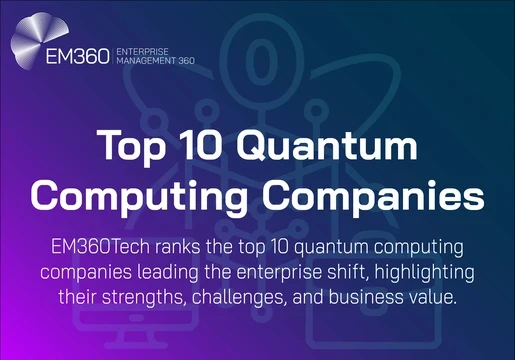If you’ve worked in marketing over the last few years, you’ve probably seen QR codes make a big comeback. Once dismissed as a gimmick, they’re now everywhere on packaging, posters, TV ads, and even receipts. The reason is simple: people are glued to their phones, and QR codes offer an instant way to move them from a physical touchpoint into a digital experience.
One of the most effective and surprisingly under-discussed applications is linking PDFs directly to a QR code. With a single scan, a customer can pull up a brochure, a menu, a product manual, or even an exclusive report. This simple interaction is proving to be a quiet but powerful driver of digital engagement.

The Shift From Static to Interactive Content
Traditional PDFs have always been useful for businesses. They’re portable, easy to format, and widely accepted across industries. But they’ve also been static. You either emailed them, printed them, or hosted them on a website and hoped people would find the right link.
When you connect a PDF to a QR code, that static content becomes interactive. Suddenly, a printed flyer can deliver a full catalog, a product box can hold a detailed assembly guide, or a business card can carry a case study. And because the document lives online, it can be updated at any time the QR code itself doesn’t need to change.
That flexibility is what makes a PDF QR code for Marketing so valuable. It ensures that the digital journey is always current and always available.
Why Marketers Are Paying Attention
Marketers are always on the lookout for tools that don’t eat up the budget, can scale easily, and actually show results. PDF QR codes manage to check all three boxes.
First, they remove friction. Nobody wants to type out a long URL on their phone or download yet another app. A quick scan, and the document is open whether it’s a menu, a catalog, or a whitepaper.
Second, they’re endlessly flexible. That same QR code on a flyer or a product package can stay in use for months or years, while the PDF behind it changes whenever the business needs. Restaurants update menus weekly, retailers refresh seasonal collections, and B2B companies swap in new product sheets all without the cost and waste of reprinting.
And then there’s the data. When companies use a dynamic QR solution, they can see when and where their codes are being scanned. That turns a static PDF into something measurable a small but meaningful way to track customer engagement.
Put simply, a PDF QR code extends the life of your content. Instead of being forgotten in an inbox or lost in a stack of papers, it becomes an always-available asset that keeps pulling people back in.
Everyday Use Cases That Work
Retail and Consumer Goods
Product packaging is prime real estate. A small QR code can open a PDF with nutritional info, styling guides, or detailed specifications that don’t fit on the label. Customers feel informed, and the brand builds trust.
Events and Trade Shows
Instead of lugging stacks of brochures to a conference, companies can share a single code on a booth display. Attendees scan and download a catalog or whitepaper on the spot. Bonus: no heavy bags full of paper to carry around.
Hospitality
Hotels and restaurants have embraced QR codes for menus, but the potential goes further. Hotels now place codes in rooms that link to PDF welcome guides, local recommendations, or service directories making the stay smoother for guests.
B2B Sales
Sales teams often rely on data sheets, proposals, and case studies. By sharing them via a QR code on a business card or a presentation slide, they give prospects instant access without cluttering their inbox.
The Bigger Picture: Engagement in a Mobile-First World
At the core of this shift is one thing: engagement. People expect brands to meet them on their phones whether they’re standing in a supermarket aisle, walking past a billboard, or flipping through a trade show program. A QR code that opens a PDF makes that connection instant. No searching, no typing, no hassle.
But the real magic happens after the scan. A PDF doesn’t have to be a dead end it can guide the customer to the next step. Maybe that’s a link to your website, a sign-up form for a newsletter, or a quick path to your online store. In other words, the QR code is more than a shortcut to a document; it’s the start of a journey.
That’s why the PDF QR code for Marketing is catching on. It’s not just a way to ditch paper or save on printing. It’s about creating a smooth handoff from the offline world into the digital one and keeping the conversation going once the customer is there.
Looking Ahead
What’s interesting is that PDF QR codes are still in their early days. Right now, most companies use them for the basics menus, manuals, brochures. But it’s not hard to imagine where this is going. The real potential shows up once they start tying into the systems businesses already use, like CRMs or marketing automation tools. That’s when you’re not just sharing a PDF, you’re actually tracking who looked at it, when, and what they did next.
And the experience itself is only going to get smarter. Picture this: you scan a QR on a box of sneakers and instead of a generic PDF, you get a catalog in your language, with local pricing and maybe even region-specific offers. Or you’re at a big conference, and your badge QR pulls up a personalized schedule based on the talks you signed up for.
That’s the direction we’re heading. The code isn’t the impressive part it’s what happens after the scan that will really change how brands and customers connect.
Final Thought
Marketing is full of big, flashy trends AI, AR, the metaverse. But sometimes it’s the simple, practical tools that quietly reshape customer behavior. A PDF QR code for Marketing might not grab headlines, but it delivers measurable value: better engagement, lower costs, and a smoother experience for the customer.
In a world where attention is scarce, any tool that removes friction deserves a place in the marketer’s toolkit. PDF QR codes fit that bill perfectly.







Comments ( 0 )